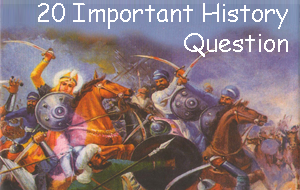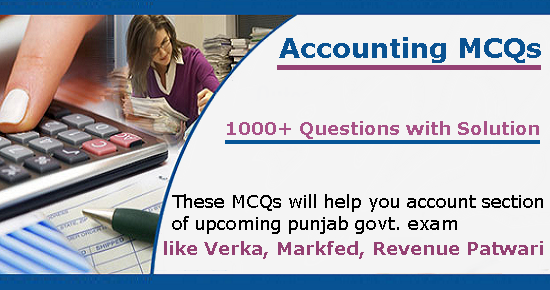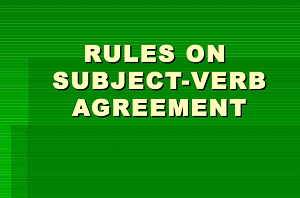
20 Important History Question For All Punjab Government Exam ( Specially Prepare for High Court Exam )
1 To which place Aryabhata, the great mathematician, went for advanced studies?
1. Takshashila
2. Patliputra
3. Kashi
4. Kaushambi
2. Where was Bhaskara, also known as Bhaskaracharya or Bhaskara II, an Indian mathematician & astronomer, was born?
1. Kanchipuramii
2. Thanjavur
3. Bijapur
4. Viadurai
He was born at Biddur, Bijapur Karnataka, says Britannica
3. The caste-system during early Vedic age prohibited
1. Inter caste dining
2. Inter caste marriages
3. Both
4. None of these
None because those righties begun only after post-vedic age period, says NCERT Sociology class12 Ch3
4. Which among the below mentioned Upper Palaeolithic places in India is wrongly matched with the state it is located in?
1. Bhimbetka, Madhya Pradesh
2. Betamcherla, Andhra Pradesh
3. Inamgaon, Maharashtra
4. Singh Bhumi, Himachal Pradesh
First three sites correctly matched with respective states, hence Singh Bhumi is wrong.
5. Kalidasa’s ‘Kumarasambhavam’ describes the story of the birth of which mythological character?
1. Sanatkumar
2. Kartikeya
3. Pradyumna
4. Abhimanyu
It describes the story of Kartikeya’s birth. Question lifted verbatim from Pearson
6. Where and when was the 2nd Buddhist Council held?
1. Patliputra in 250 BC
2. Sri Lanka in the 1st century BC
3. Vaishali in 383 BC
4. Mandalay in 1871 AD
It was held at Vaishali,under Shishunaga dynasty, says Lucent GK page21
Modern India
7. In which year, Mahatama Gandhi travelled to Champaran in Bihar to inspire the peasants to struggle against the oppressive plantation system?
1. 1914
2. 1915
3. 1916
4. 1917
He went to Chamapran in 1917. Ref: Spectrum, Page 123 OR LucentGK Page 108.
8. With which objective, CR Das and Motilal Nehru formed the Swaraj Party within the Congress?
1. Spearhead the mass struggles
2. Forge Hindu-Muslim unity
3. Participate in elections to the provincial council
4. Organise legislative protests against Rowlatt
They did so, to Participate in election to enter in councils Spectrum, Page 136 OR LucentGK Page 108.
9. The industrial working class did not participate in the Civil Disobedience Movement in large numbers, except in
1. Nagpur region
2. Madras region
3. Surat region
4. Calcutta region
Nagpur NCERT class10, India & Contemporary world ch3, Page 66
10. Dr B R Ambedkar clashed with Mahatma Gandhi at the 2nd Round Table Conference demanding
1. Reservation for Dalits in Government jobs
2. Reservation for Dalits in Ministries
3. Separate citizen status for Dalits
4. Separate Electorate for Dalits
They had difference of opinion over Separate electorate for Depressed classes (Dalits) Ref: Spectrum, 180
11. Who brought the printing Press for the first time to India in the mid-16th century ?
1. Dutch cloth merchants
2. British traders
3. Portuguese Missionaries
4. Arab manuscript writers
Portuguese missionaries brought printing press to India for the first time says NCERT Class10, Ch7 Print and Censorship
12. Measures in India to impose censorship on printed material were initiated in 1798 by the East India Company. It was directed against
1. Bengali social reformers
2. Englishmen in India
3. Bengali writers
4. Indian Princely States
Englishmen in India NCERT Class10, Ch7 Print and Censorship
13. The Radcliffe Line is named after its architect, Sir Cyril Radcliffe. It is a boundary demarcation line between
1. Pakistan & Afghanistan
2. India & Bhutan
3. India & Pakistan
4. India & Myanmar
Lord Mountbatten had appointed Radcliff commission for participation of Bengal and Punjab. Hence #3 is the answer. Ref: Spectrum Page 377.
History: World
14. The development of the world’s first practical design for an Inter-Continental Ballistic Missile, A9/10, was undertaken in Nazi Germany during the World War II. It was intended for use in bombing
1. London and other coastal cities of Britain
2. Northern cities of France, including Venice
3. New York and other American cities
4. Interiors of USSR to cut off military supply lines to Moscow.
It was meant to target New York city
15. The original name of Ho Chi Minh, the President of the Vietnam Democratic Republic, was Nguyen Van Thanh which he later changed to Ho Chi Minh before becoming the President. The literal meaning of Ho Chi Minh is
1. He Who Leads
2. He Who Fights
3. He Who Enlightens
4. He Who Protects
The meaning of his name is “He who Enlightensâ€, says Britannica
16. Which famous leader once said, “we would not have made economic progress, if we had not intervened on very personal matters: how you live, the noise you make, how you spit…â€
1. Adolf Hitler, Germany
2. Ho Chi Minh, Vietnam
3. Mussolini, Italy
4. Lee Kuan Yew, Singapore
Lee Kuan Yew made this statement
17. French Revolution ended in 1790s with the ascent of
1. Rousseau
2. King Louis XVI
3. Napoleon Bonaparte
4. Robespierre
French Revolution ended with rise of Napoleon, says Tamilnadu State Edu. Book Class12 History, Page 269.
18. In his youth, Adolf Hitler aspired to be a/an
1. Architect
2. Painter
3. Singer
4. Footballer
He wanted to be a Painter, but couldn’t get admission in the prestigious acedmy for arts, says Telegraph news article
19. Many of the famous political leaders had a University Degree in Law. Which of the following world leaders didn’t have a Degree in Law?
1. Nelson Mandela
2. Fidel Castro
3. Barack Obama
4. John F Kennedy
John F Kennedy. Because other three’s biography pages on Britannica say they had completed Law degree.
20. Ernesto Che Guevara, the famous Marxist revolutionary of South America, was born in
1. Bolivia
2. Cuba
3. Argentina
4. Guatemala
He was born in Argentina says Britannica.













Veere punjab economy de question kr dyo
Upload
Sir plz send mcq on pspcl je electrical